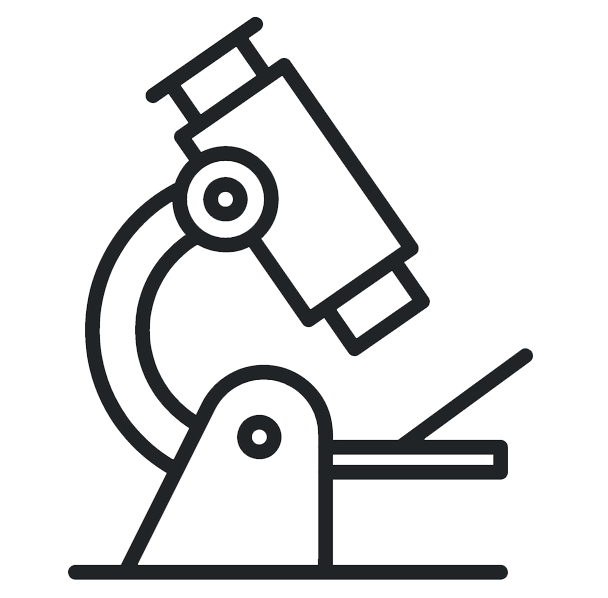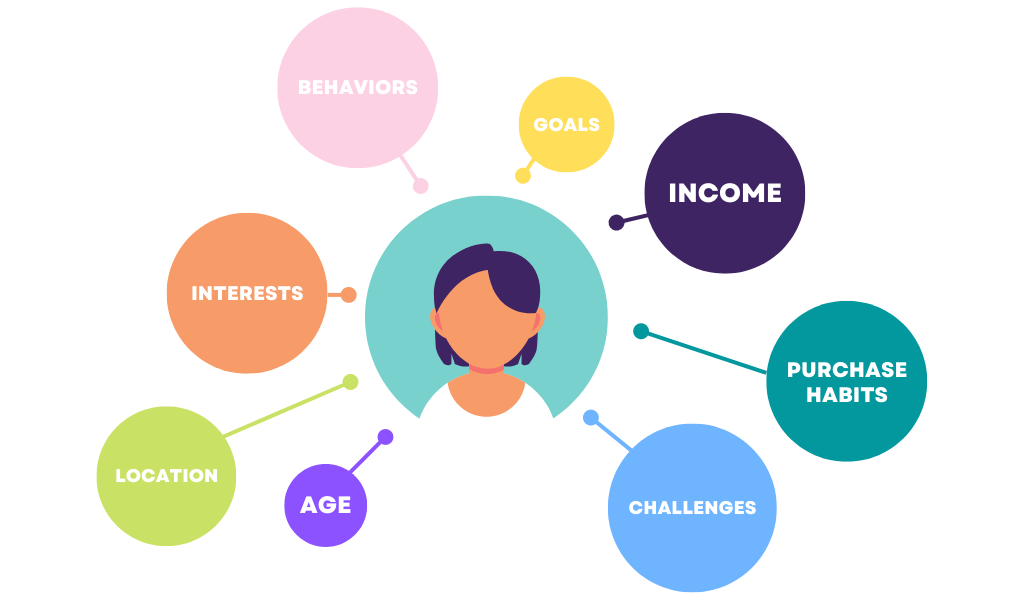Feeling like your marketing efforts are a bit… scattered? Are your sales teams spending valuable time on leads that ultimately go nowhere? It’s a common frustration. But what if you could pinpoint exactly the type of customer most likely to succeed with your product and become a long-term partner?
That's where the Ideal Customer Profile (ICP) comes in.
Forget generic market descriptions. An ICP is a hyper-focused definition of the perfect company for your business – the ones who get the most value from your offering and provide the most value back to you.
Getting clear on your ICP isn't just a "nice-to-have"; it's foundational for smart, scalable growth. It informs everything from marketing campaigns and sales outreach to product development and customer success strategies.
Ready to swap guesswork for growth? Let's dive into what an ICP really is, why it's non-negotiable, and a step-by-step guide to creating one for your own business.
What We'll Cover:
- What Exactly is an Ideal Customer Profile (ICP)?
- The Game-Changing Benefits of Having a Clear ICP
- How to Create Your ICP: A 5-Step Action Plan
- ICP vs. Buyer Persona: Clearing Up the Confusion
- Common Mistakes to Sidestep When Building Your ICP
- Making Your ICP Actionable Across Your Teams
What Exactly is an Ideal Customer Profile (ICP)?
Think of your absolute best customers. The ones who rave about your product, stick around for years, and maybe even send referrals your way. They "get" it. They're successful using your solution, and they're profitable for your business.
An Ideal Customer Profile (ICP) is a detailed description of that type of company.
It focuses on the organizational level, defining the firmographic, environmental, and behavioral attributes of the businesses that are the perfect fit for your products or services. This is especially crucial in B2B contexts.
Instead of a vague target like "small businesses," an ICP gets specific. For example, an ICP for a cybersecurity firm might look like:
- Industry: Financial Services or Healthcare (dealing with sensitive data)
- Company Size: 100-500 employees (large enough to need robust security, small enough for a potentially faster sales cycle)
- Location: Primarily North America (due to specific compliance knowledge, like HIPAA or CCPA)
- Challenge: Experiencing recent security scares or facing upcoming compliance audits
- Technographics: Using cloud infrastructure (like AWS or Azure) but lacking dedicated, in-house cybersecurity expertise.
See the difference? It’s a concrete definition that helps you instantly recognize a potential perfect-fit customer when you see one. It’s less about who the individual buyer is (that's a buyer persona) and more about what kind of company they work for.
The Game-Changing Benefits of Having a Clear ICP
Investing time in defining your ICP isn't just an academic exercise. It translates directly into tangible business results. Here’s why it’s so powerful:
- Gain Laser-Like Marketing Focus: Stop wasting budget trying to reach everyone. Your ICP tells you who to target, where they spend their time (online channels, industry events, publications), and what messages will resonate with their specific pains and aspirations. Your content strategy becomes sharper, your ad campaigns more efficient, and your marketing ROI improves significantly.
- Boost Sales Efficiency and Effectiveness: Equip your sales team with a clear definition of a qualified lead. They can prioritize outreach efforts on companies that match the ICP, leading to more meaningful conversations, shorter sales cycles, higher win rates, and less time wasted on dead-end pursuits. It also helps align sales and marketing on lead quality.
- Inform Smarter Product Development: When you deeply understand the needs, goals, and operating environment of your ideal customers, you can build a product roadmap that truly serves them. Feature prioritization becomes easier, and you develop solutions that solve real-world problems for the customers you value most.
- Improve Customer Retention and Success: Companies that fit your ICP are inherently more likely to succeed with your product or service. They have the problems you solve and the characteristics that lead to value realization. This means better onboarding experiences, higher adoption rates, lower churn, increased lifetime value (LTV), and a greater likelihood of creating customer advocates.
- Drive Alignment Across Your Entire Organization: An ICP provides a shared language and understanding of your target customer. When Marketing, Sales, Product, and Customer Success are all aligned on who they are serving, internal collaboration improves, messaging becomes consistent, and the overall customer experience feels seamless.
Without an ICP, teams often operate in silos with slightly different ideas of the "right" customer. With one, everyone pulls in the same direction.
How to Create Your ICP: A 5-Step Action Plan
Ready to build your own ICP? It involves combining data analysis with qualitative insights. Here’s a practical, step-by-step approach:
Step 1: Identify and Analyze Your "Best" Customers (The Data Foundation)
Start with your existing customer base. Who represents the gold standard? Define "best" based on your business goals. Look for customers with:
- High Lifetime Value (LTV)
- Strong Profitability
- Low Churn / High Retention
- High Product Usage / Engagement
- Clear Success / ROI from your solution
- Reasonable Support Needs
- Willingness to Advocate (testimonials, referrals)
Compile a list of these top 10-20 customers. Now, dig into the data you have on them. Look for common patterns in:
- Firmographics: Industry, company size (employees/revenue), location, growth rate.
- Technographics: What other key technologies do they use (CRM, marketing automation, ERP, specific industry tools)? This can reveal integration opportunities or technical maturity.
- Structural Details: Are they public or private? Do they have specific departments relevant to your product (e.g., a dedicated R&D team)?
- Financials: If possible, estimate their budget range for solutions like yours.
Gather as much objective data as possible. This provides the factual skeleton of your ICP.
Step 2: Gather Qualitative Insights (Talk to Your Best Customers)
Data tells you what your best customers look like, but interviews tell you why they are a great fit. This step is invaluable for understanding motivations and context.
Reach out to a selection of customers from your "best" list. Ask for a brief 20-30 minute virtual coffee chat to discuss their experience. Frame it as seeking feedback to improve, not a sales call.
Focus on open-ended questions:
- "Can you walk me through the challenges you faced before you started using our solution?" (Uncover their core pain points in their own words).
- "What specific goals were you hoping to achieve?" (What does success look like?)
- "What triggered your search for a solution like ours?" (Understand the buying journey catalyst).
- "What other options did you consider, and what ultimately led you to choose us?" (Identify key differentiators and competition).
- "How has our solution impacted your business/workflow? Any specific results?" (Quantify the value).
- "Where do you typically learn about new trends or solutions in your industry?" (Discover their 'watering holes').
- "What are your biggest strategic priorities for the next 6-12 months?" (Anticipate future needs).
Record these conversations (with permission) and take detailed notes. Pay close attention to the language, recurring themes, and emotions expressed.
Step 3: Synthesize Your Findings (Connect the Dots)
You now have quantitative data and rich qualitative insights. It's time to bring it all together.
- Identify Patterns: What characteristics, challenges, goals, technologies, and motivations consistently appear across your best customers?
- Cross-Reference: Does the interview feedback support the data trends? For instance, did several companies in the 100-250 employee range mention the same integration challenge?
- Define Boundaries: What attributes do your best customers consistently not have? Perhaps none are below a certain revenue threshold, or none operate without a specific compliance requirement. This helps define who is outside your ICP.
- Prioritize: Not all attributes are equally defining. Which characteristics seem most strongly correlated with customer success and value for your business? Focus on the most impactful differentiators.
Step 4: Document Your ICP (Make it Official and Accessible)
Condense your findings into a clear, easily shareable document. This isn't just for you; it's a tool for your entire organization. Structure it logically:
- ICP Name/Snapshot: A concise, descriptive title or paragraph summarizing the profile (e.g., "Mid-Market Tech Companies Scaling Sales Teams").
- Key Firmographics:
- Industry/Vertical(s)
- Company Size (Employee Range, Annual Revenue Range)
- Geographic Location(s)
- Technographics:
- Essential technologies they use (that interact with or are relevant to your solution).
- Level of tech maturity.
- Key Challenges & Pain Points:
- List the top 3-5 problems they face that your solution directly addresses (use customer language!).
- Goals & Objectives:
- What are they trying to achieve where your solution can help? (e.g., Increase operational efficiency by X%, Reduce security risks, Improve team collaboration).
- Buying Triggers:
- What events typically prompt them to seek a solution?
- Information Sources ('Watering Holes'):
- Where do they learn and network? (Specific publications, websites, communities, conferences).
- (Optional but Recommended) Exclusion Criteria:
- Clearly define characteristics of companies that are not a good fit (e.g., companies below X employees, industries with Y regulation).
Keep the language clear and practical. Avoid jargon. Add quotes from your interviews where relevant to bring it to life.
Step 5: Review, Refine, and Iterate (Keep it Alive)
Your ICP is not a one-and-done document. Markets shift, your product evolves, and your understanding deepens.
- Validate: Use the ICP to guide targeting and qualification. Track whether leads matching the ICP perform better (higher conversion rates, LTV, etc.).
- Socialize: Share the ICP widely across Marketing, Sales, Product, and Customer Success. Train teams on how to use it. Gather their feedback – does it match their real-world experience?
- Iterate: Schedule regular reviews (e.g., quarterly or semi-annually). Update the ICP based on performance data, new customer insights, and market changes. Is a new type of successful customer emerging? Have their pain points shifted?
Download our free Ideal Customer Profile Worksheet
ICP vs. Buyer Persona: Clearing Up the Confusion
It's easy to mix these up, but they serve distinct purposes:
- Ideal Customer Profile (ICP): Defines the perfect COMPANY or organization to sell to. It focuses on firmographics, technographics, budget, challenges at the company level. Think: What type of building is the best fit?
- Buyer Persona: Creates a semi-fictional representation of the INDIVIDUALS within those ideal companies who are involved in the buying process. It details their job title, responsibilities, personal goals, pain points, influences, and information channels. Think: Who are the key people living or working inside that building, and what do they care about?
You need both for effective B2B marketing and sales. The ICP identifies the right companies, and the buyer personas help you tailor your message to the right people within those companies.
Common Mistakes to Sidestep When Building Your ICP
Creating an effective ICP requires diligence. Avoid these common pitfalls:
- Being Too Vague: "Companies needing software" isn't an ICP. Specificity is key.
- Relying Solely on Assumptions: Base your ICP on real data and customer interviews, not just internal brainstorming.
- Focusing Only on Firmographics: Company size and industry are important, but understanding their challenges, goals, and triggers provides much deeper targeting insights.
- Ignoring "Bad Fit" Customers: Analyzing why some customers churn or are difficult to serve can be just as informative for defining who not to target.
- Treating it as a One-Time Task: Failure to review and update your ICP regularly makes it quickly outdated and less effective.
- Keeping it Siloed: If only the marketing team knows the ICP, its value is severely limited. Ensure it's a shared resource used across departments.
Making Your ICP Actionable Across Your Teams
An ICP truly shines when it's actively used to guide decisions:
- Marketing:
- Targeting: Use ICP criteria for precise audience segmentation in ad platforms (LinkedIn, Google Ads), account-based marketing (ABM), and content distribution.
- Messaging: Craft website copy, blog posts, emails, and ad creatives that speak directly to the ICP's defined pains and goals.
- Channel Strategy: Prioritize efforts on the platforms and publications ("watering holes") identified in the ICP research.
- Sales:
- Prospecting: Focus outreach efforts on companies matching the ICP profile.
- Lead Qualification: Use the ICP as a checklist to quickly assess lead quality and prioritize follow-up.
- Discovery Calls: Tailor questions to uncover pains and goals relevant to the ICP.
- Product Development:
- Roadmap Decisions: Prioritize features and enhancements that solve critical problems for your ideal customers.
- User Research: Recruit participants for feedback sessions who fit the ICP.
- Customer Success:
- Onboarding: Customize onboarding flows based on the typical needs and tech stack of ICP companies.
- Success Planning: Align account goals with the known objectives of your ideal customer segment.
Focus Your Efforts, Fuel Your Growth
Building an Ideal Customer Profile is an investment in clarity and efficiency. It moves you from hoping the right customers find you to proactively seeking them out with confidence. By understanding exactly who you serve best, you can align your entire organization, optimize your resources, and build stronger, more valuable customer relationships.


